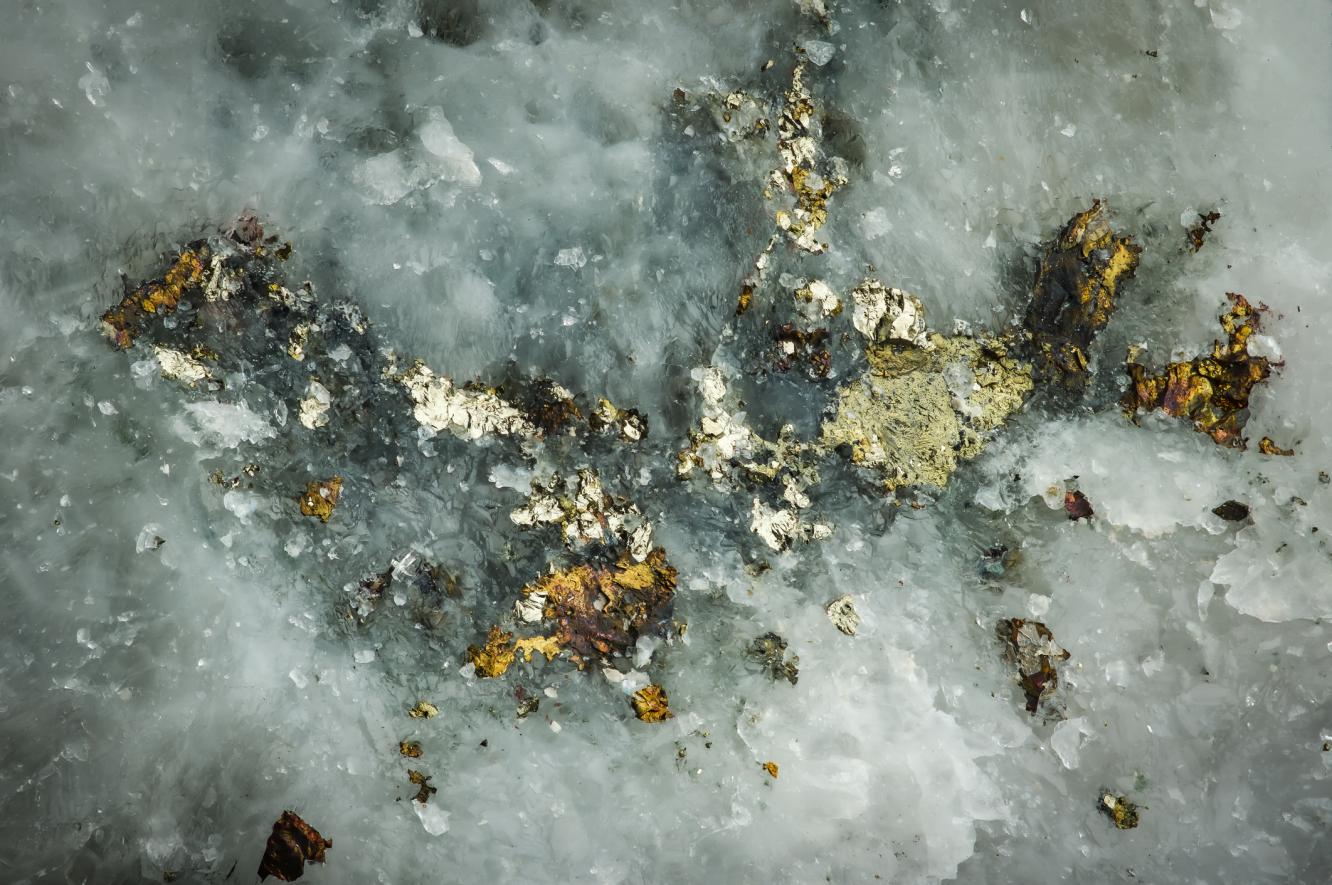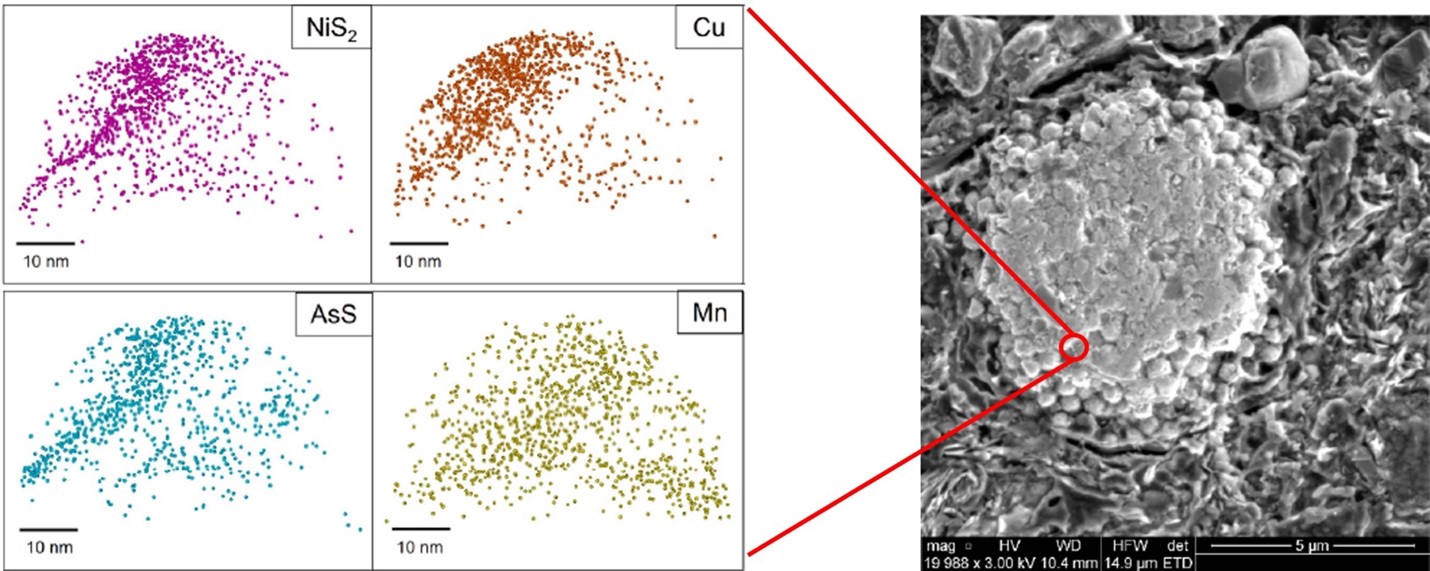Functional and Systems Biology
Elemental Variation in Pyrite: A Key to Ocean Chemistry
How nanoscale variations in pyrite trace element chemistry can be used to better understand past ocean chemistry

A multi-institutional team of scientists used atom probe tomography at EMSL to analyze pyrite from water basins. The goal is to shed additional details about the history of the ocean. (Photo by mineral vision | iStock)
The Science
Pyrite is the most abundant sulfide mineral in the Earth’s crust. Additionally, the mineral contains trace elements that, when studied together, can help reveal the evolutionary history of the ocean. Currently, little is known about where and when trace elements are incorporated into pyrite. A recent study using atom probe tomography (APT), however, successfully characterized trace element distributions in framboids, or spherical clusters of microcrystals of pyrite, with improved resolution as compared with previous methods. This knowledge will help scientists use pyrite trace metal concentrations to analyze and quantify early ocean chemistry and, as a result, the ocean’s evolution through time.
The Impact
For the first time, a multi-institutional team used atom probe tomography to analyze pyrite framboids from water basins that are both anoxic and sulfidic (where there is no oxygen and the level of free hydrogen sulfide is raised). This presents a significant achievement, as pyrite framboids are weakly held together, making sample preparation difficult for atom probe analysis. With the technique, the team demonstrated that pyrite, formed in the sediments, is enriched in several trace elements. This means that pyrite trace element analyses reflect the chemistry of the sediment pore water and not the overlying water column, although these are likely related. This is important for understanding past ocean chemistry from analyses of sedimentary pyrite.

Summary
For this study, samples were collected from an international ocean drilling project drill core from the Cariaco Basin (the second-largest euxinic basin in the world) and the Demerara Rise (a proto-Atlantic euxinic basin). These samples were then examined by a multi-institutional team using scanning electron microscopy to identify pyrite framboids. APT tips were then produced from the pyrite framboids using a scanning electron microscope equipped with a focused ion beam at the Environmental Molecular Sciences Laboratory (EMSL), a Department of Energy (DOE) Office of Science user facility. After APT analysis, the team identified trace element zoning in the APT tips. This, coupled with previous transmission electron microscopy analyses also conducted at EMSL, indicated that much of the trace elements in pyrite came from sediments shortly after sedimentation. This finding provides additional understanding of how trace elements are incorporated into pyrite, and this information is essential for using trace element analysis of sedimentary pyrite to understand the chemistry of past oceans.
Contacts
Daniel Gregory, University of Toronto, Daniel.gregory@utoronto.ca
Sandra Taylor, EMSL, Sandra.Taylor@pnnl.gov
Daniel Perea, EMSL, Daniel.Perea@pnnl.gov
Funding
A portion of this research was conducted as part of a Large-Scale Research project at the Environmental Molecular Sciences Laboratory, a DOE Office of Science user facility. The project was also supported by a Natural Sciences and Engineering Research Council of Canada Discovery Grant, as well as the NASA Exobiology and National High Magnetic Field Laboratory, supported by the National Science Foundation and the state of Florida. Additional funding was provided through the NASA Astrobiology Institute, issued through the Science Mission Directorate, and the NASA Interdisciplinary Consortia for Astrobiology Research.
Publication
N.M.M. Atienza, et al. “Refined views of ancient ocean chemistry: Tracking trace element incorporation in pyrite framboids using atom probe tomography.” Geochimica et Cosmochimica Acta 357, 1-12. (2023). [DOI: 10.1016/j.gca.2023.07.013]

